My first work with The Tyee was an opinion piece that published a few months after the pandemic started up. At the time, COVID-19 outbreaks were reported at meat processing plants in Canada, and I felt it was important to call attention to how our buying habits can affect the food and agriculture industries.
It’s now over two years later, and the pandemic is still going. With new reports out that the only people who have largely thrived in this timeframe are billionaires — in particular grocery magnates like Loblaws’ president Galen Weston Jr. — it feels timely to revisit the ways in which our global food and economic system is affected by ways both large and small.
In terms of the small scale, I am as much a problematic participant in these global systems as anyone. Living on the limited income of a freelance writer and part-time editor, I often take the shortcuts of hitting big box grocery stores, armed with discounts provided by loyalty programs, store-made apps and in-store deals. Time is also a limited commodity in my life; trimming corners here and there in my daily routine sometimes leads to grabbing frozen pizzas, instant meals or other heavily processed items.
This summer, though, I was determined to put the brakes on those habits, and to truly put my money where my mouth is. That meant taking on a self-imposed challenge to curate my grocery shopping in a more deliberate, intentional way.
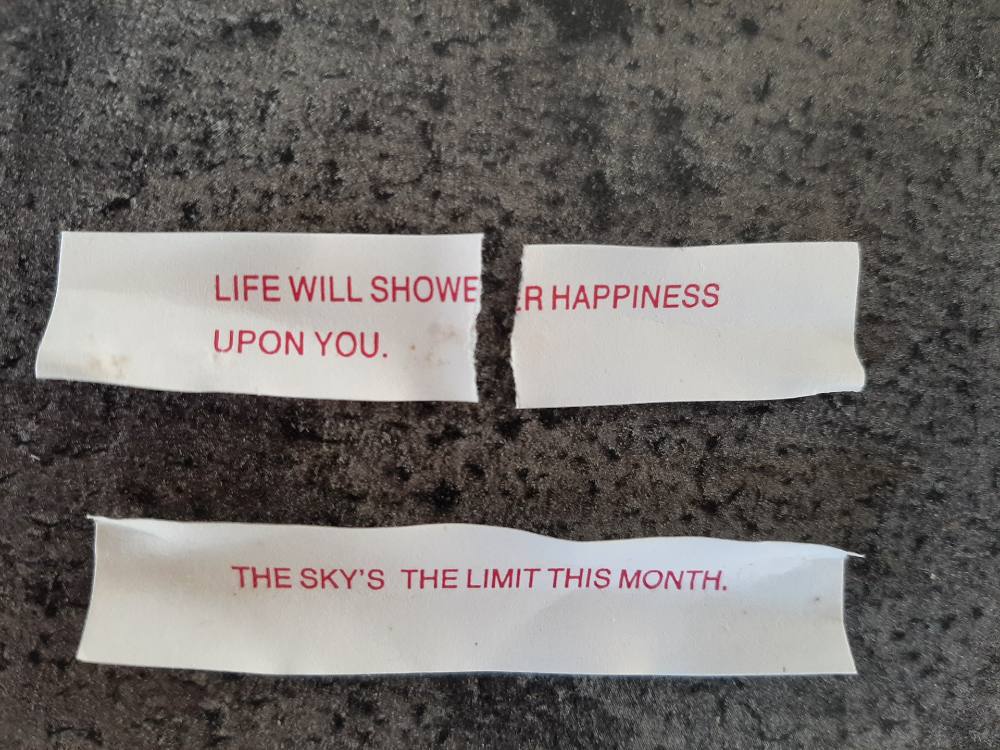
Throughout the month of July, I dedicated my food purchases, as much as humanly possible, to eating locally — and by that, I mean all of the province of British Columbia. In addition, I also allowed myself the luxury of using spices I already had on hand. I also took full advantage of the small herb and vegetable garden I’ve cultivated on the balcony of my bachelor apartment. On Vancouver Island, gardening is set to a proverbial easy mode, and armed with a lush strawberry plant, some green onions, broccoli, tomatoes and basil, I definitely had advantages that not everyone has — including a total freedom from allergies, religious beliefs or other dietary restrictions like celiac disease or diabetes.
That said, I also have the disadvantage of being a pretty basic home cook, and my tastes are basic to match, so learning new recipes wasn’t really on the table. I don’t typically experiment in the kitchen, so my plan mainly relied on trying to replicate my big box grocery purchases in local settings.
While I’d love to have eaten only Vancouver Island cuisine, it is estimated that we are only able to supply about 10 per cent of the food we consume here. With that slightly broader definition of “local” in hand, and with a personal pledge to also avoid corporate outlets where possible, on the basis that such outlets are not representative of “local” business and are also likely price-gouging, I set out to put food on my table.
Here is what I learned.
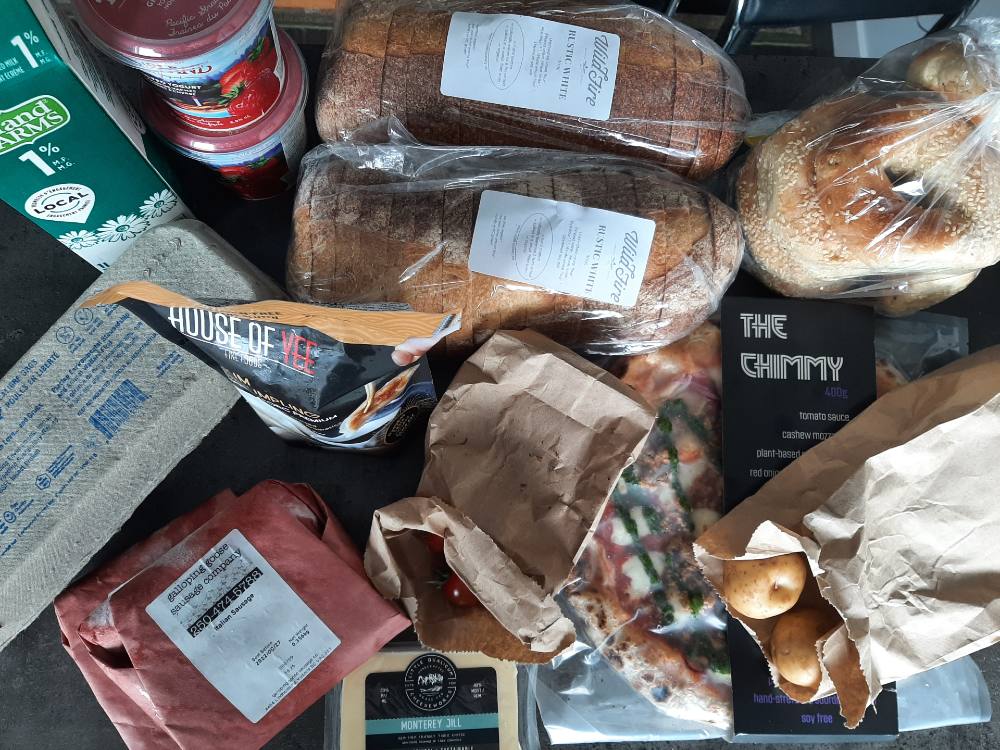
Week One: Trust, but verify
Zero Waste Emporium was one of my first choices. The store is known for being environmentally friendly, and encourages patrons to bring reusable containers instead of packaging things in single-use plastic.
With a helpful employee guiding me to Island-raised items, I came away with a haul including a raspberry mint jam from Victoria’s Old Soul Jam Co.
I needed something to spread that jam on, which took me to a local baker: the Bikery. Canada is the world’s sixth-largest wheat producer, and the vast majority of that is produced in Alberta and Saskatchewan, which produced 8,170,100 and 9,566,300 metric tonnes of wheat in 2010, respectively. By comparison, B.C. only produced 43,700 tonnes in 2010. B.C. wheat exists but is less common.
The Bikery's owner said that with global supply chain issues from COVID-19 and Russia’s invasion of Ukraine, prices of flour skyrocketed. I asked him if he thought he might have to increase prices.
“Oh, I already have,” he said.
I rounded out my week with a trip to For Good Measure. This indie grocer has a deal where they offer 10 per cent off everything for the first Wednesday of each month — a welcome saving for my tight budget.
With cheese, bread and tomatoes, I’m able to make sandwiches. My morning meals are jam on toast, eggs and yogurt. I fry up some chicken thighs with Zero Waste pasta sauce, mushrooms and noodles.
A surprising amount of leftovers carry over to the following week. The food I get from these small businesses feels more filling than what I usually get from big box stores.
Is it an effect of better nutritional value? Or is my subconscious mind simply placing higher value on more expensive goods, and stretching those goods out?
The answer is likely somewhere in between.
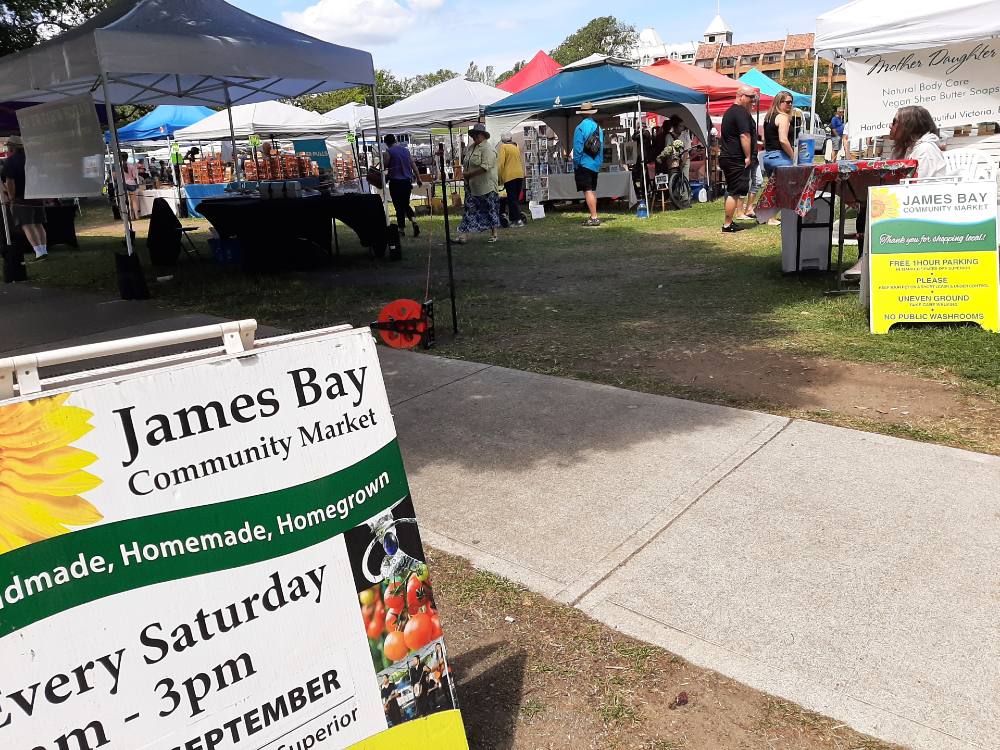
Week two: Farm-to-table
One advantage of living on Vancouver Island is a robust hobby farm and small-scale farming community. The climate of the Island is temperate, allowing for a burgeoning winery industry that’s beginning to rival the Okanagan, with operations in Central Saanich and in the Cowichan Valley.
There are also a number of farmers markets held throughout the city, and I manage to hit a pair up on the weekend for a handful of items: Moss Street Market and James Bay Community Market.
Touring the stalls, engaging in snippets of conversation with some of the makers, crafters and farmers, I find a recurring response when I tell them of my month-long pledge: “You could not do this in the winter.”
It’s a reminder that Canada has a limited growing season compared to many other countries. Perhaps more crucially, that growing season is now also being disrupted by climate change.
Last year, a drought in the Prairies caused wheat production to plummet 38.5 per cent across Canada.
This is to say nothing of how on the West Coast, the heat dome cooked over 1 billion mollusks to death, and there are still potential illnesses lingering for harvesters.
Flooding in the Fraser Valley also left its mark on farmers and growers, and a cool spring delayed some crops this year.
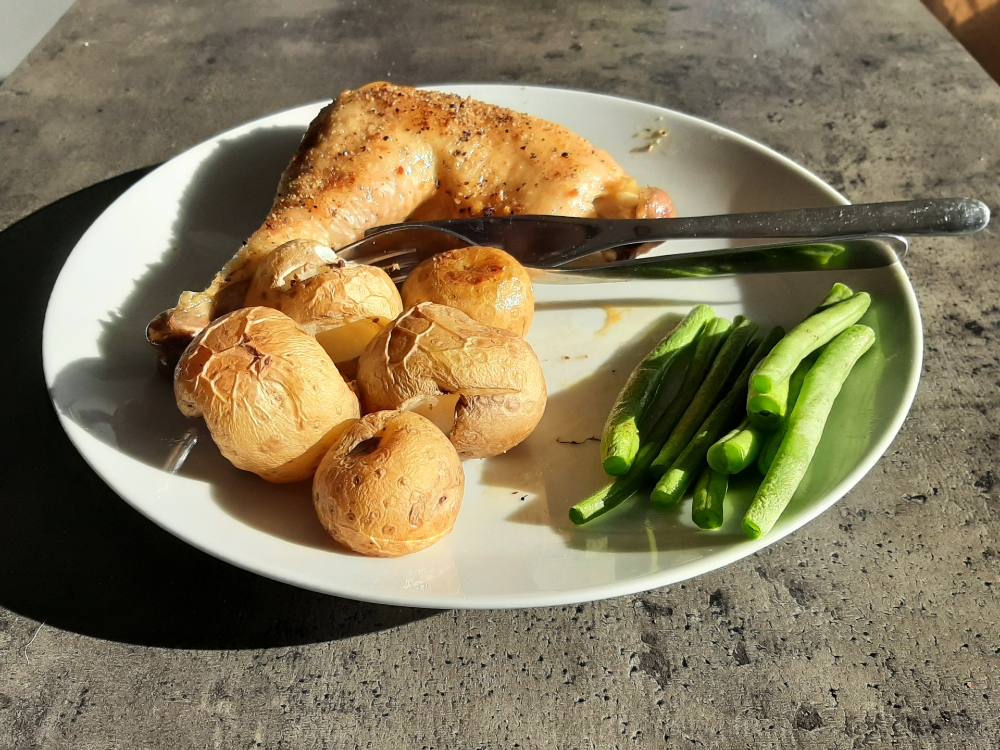
While none of these events are individually anything to panic about in terms of food supplies, they serve as continual reminders that our food is only available so long as it can actually grow.
If these costs are less exact than at the businesses I bought from in week one, it’s only because cash is king at farmers markets, and receipts are not handed out. I rely heavily on note-taking for these records.
I’m particularly pleased with the simple homey nature of a meal of baked chicken, baked potatoes and fried green beans from this list of ingredients.
The soup mixes make for an easy break from cooking from scratch along with the salad mixes, and the beef breakfast sausages are a welcome boost of protein for the mornings of toast and eggs.
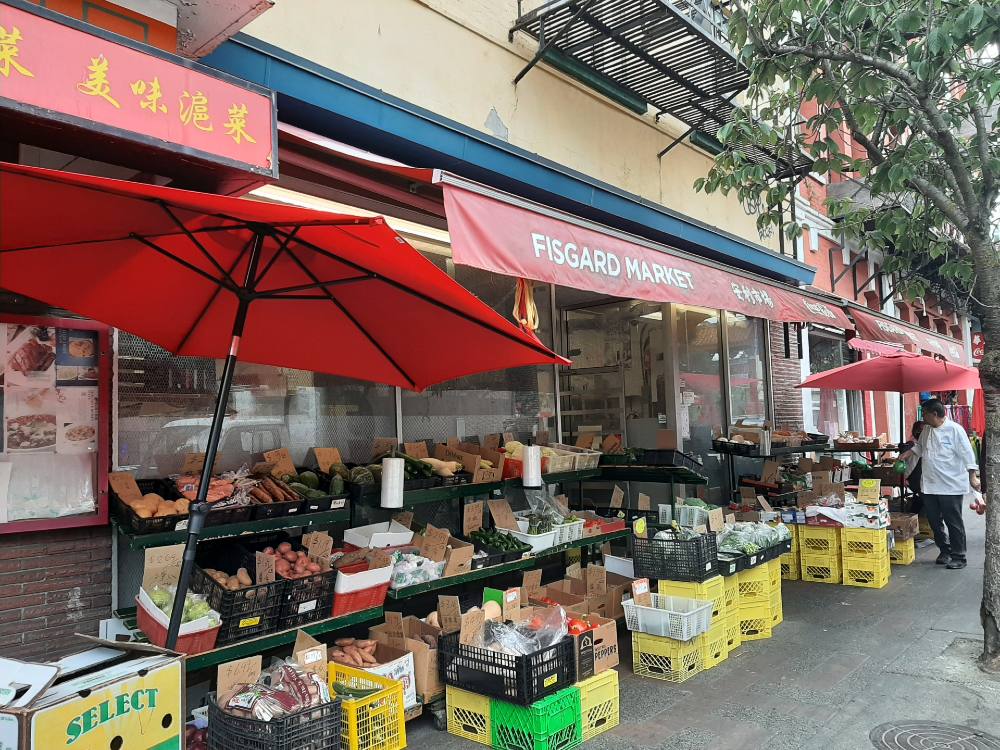
Week three: Immigrant communities and the global supply chain
I’m half-Chinese, and while I’m not much of a culinary wizard, to put it mildly, I still feel obliged to attempt a stir fry or two in my diet to stay close to my roots. This immediately raised a question, though: how would certain ethnic foods be affected by a pledge to eat locally?
Through global trade, we import a wide range of fruits and vegetables so that one can walk into a supermarket and consistently have access to things which don't grow here.
That list of non-Canadian goods includes rice (a single commercial operation started in 2019 in Chatham-Kent, Ontario), bananas (only grown at Canada Banana Farms, in Blyth, Ontario) and coconuts (though palm trees grow in Vancouver, they do not produce edible fruit).
Other things are seasonal, and multiple suppliers tell me that things like peaches or apples are often shipped up from California in the winter.
It’s a reminder that things we take for granted at the supermarket are often the result of free trade agreements, and when those agreements are jeopardized by war, politics, or even a pandemic, what’s left on the shelf can look very different.
Nevertheless, I hit up Chinatown in Victoria to see what I could find.
I was delighted to find a large number of B.C.-made goods at Fisgard Market, including soy sauce, chow mein noodles and prepared dim sum, made in the Lower Mainland.
The chow mein turned out better than I’d hoped. My mother, hopefully, will be proud when she reads this. I also picked up two more loaves of bread from the Bikery, at $5 apiece. I eat a lot of bread, it turns out.
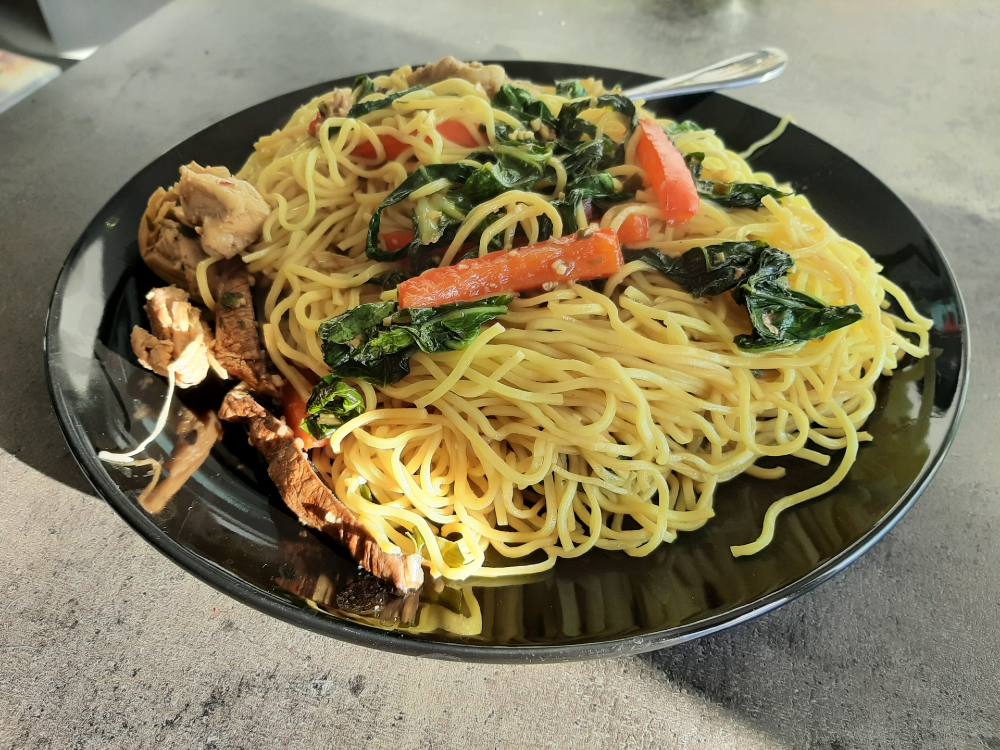
Week four: Straight to the source
Upon digging a little, I felt I cheated with the milk I bought in the first week from Island Farms. Island Farms does represent B.C.-based farmers, but under the larger umbrella of Agropur. I felt less confident that I was participating in the “buy local” spirit, partaking in large-scale industry operations.
I hunted down a truly independent dairy operation: the Cowichan Milk Co., located in the Cowichan Valley. With a modest 50-cow Holstein herd, they fit the bill.
There was just one problem: they don’t deliver to Victoria.
For the scale of their operation, sending a delivery van down the Malahat highway doesn't make sense. Indeed, moving goods around Vancouver Island has been problematic for years, such as when the Malahat closed down last winter during a period of sustained storms.
A lack of rail freight and upgraded port facilities in harbours like Victoria or Port Alberni to handle large commercial shipping also raises the carbon footprint of the Island. Bruce Williams, on behalf of Greater Victoria Chamber of Commerce, brought this issue up during public presentations for the provincial Select Standing Committee on Finance and Government Services.
“All of the goods coming into this country through the Port of Vancouver have to go through the Port of Vancouver before they come back to Vancouver Island,” Williams said. “It's a large carbon footprint and cost as well, especially goods that then leave that region, go to other points east of here to be brought back again.”
I realized the only way I would get local milk was to go straight to the source. That meant hopping a bus up to Duncan at an inflated fare of $10, with a round-trip duration of about four hours.
With a voyage that long, I felt I should stock up on other goods, and hit the farmers market in Duncan as well.
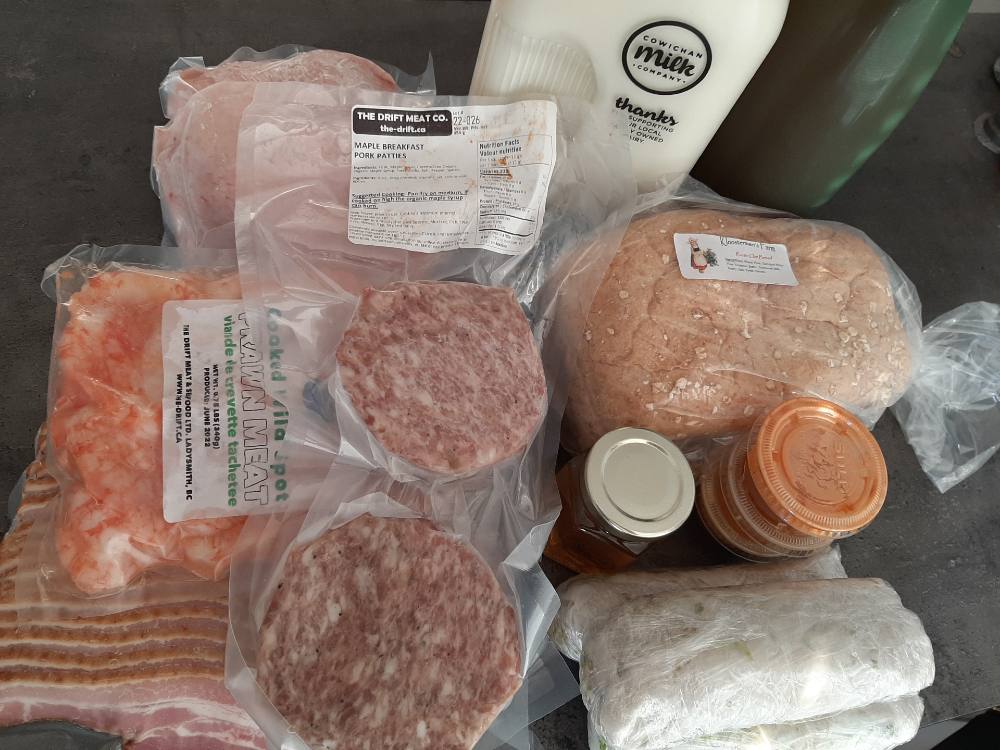
How does this compare to my usual?
The million-dollar question, to use a thematically appropriate idiom, is this: how did this compare against my usual grocery purchases?
Over the course of the month, I spent a grand total of $467.91.
Comparatively, in July 2021, I spent $255.75 on groceries.
That $200 is significant for a penniless writer, to be sure, but I have discovered a few things. One, as I said earlier, is that I do feel much healthier, and like I am eating less unhealthy food. Another is that it bears repeating that the costs I am paying an independent farmer or supplier are borne out in what are much more likely to be better labour conditions, fewer carbon emissions and fewer industrial byproducts. Furthermore, July 2021 predates the worst effects of hyperinflation that we’re seeing right now, so it’s hard to say how it would have adjusted this year.
But I think the bigger picture is in recognizing how our food systems have arrived at this place. Globalization, climate change, supply chains — these are forces which, regardless of how conscious we are of them, are having massive impacts on our daily lives.
As we see ever-rising costs in our groceries, our gas, and in our housing, it’s worth taking the time to step back and assess where those costs are coming from, and what we can do about them.
For me, it was a month-long look into buying locally, but it may have a lasting effect on my personal habits. I have only been back to a big box grocery once in all of August, and then only to get some parmesan cheese. I now find myself willing to shell out more money for this most basic need, so long as it means the product is worthwhile.
I’m also feeling healthier, though again, I’m quick to emphasize that a host of factors can contribute to that. But even if it’s not conclusive that this experiment made me healthier in body, it certainly did in mind.
Knowing where my food comes from, doing what I can to support local businesses while also sticking it to a billionaire class of grocery chain owners? All of that is pure food for the soul.
And I am ready to eat my fill. ![]()
Read more: Local Economy, Food



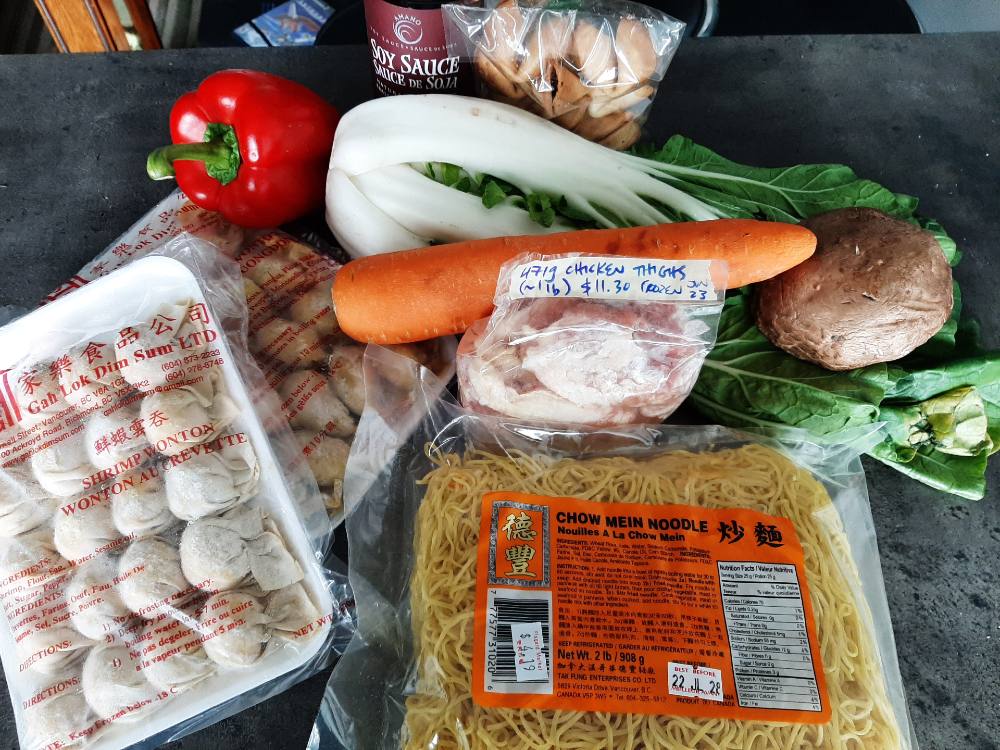









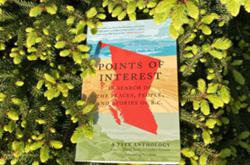


Tyee Commenting Guidelines
Comments that violate guidelines risk being deleted, and violations may result in a temporary or permanent user ban. Maintain the spirit of good conversation to stay in the discussion.
*Please note The Tyee is not a forum for spreading misinformation about COVID-19, denying its existence or minimizing its risk to public health.
Do:
Do not: